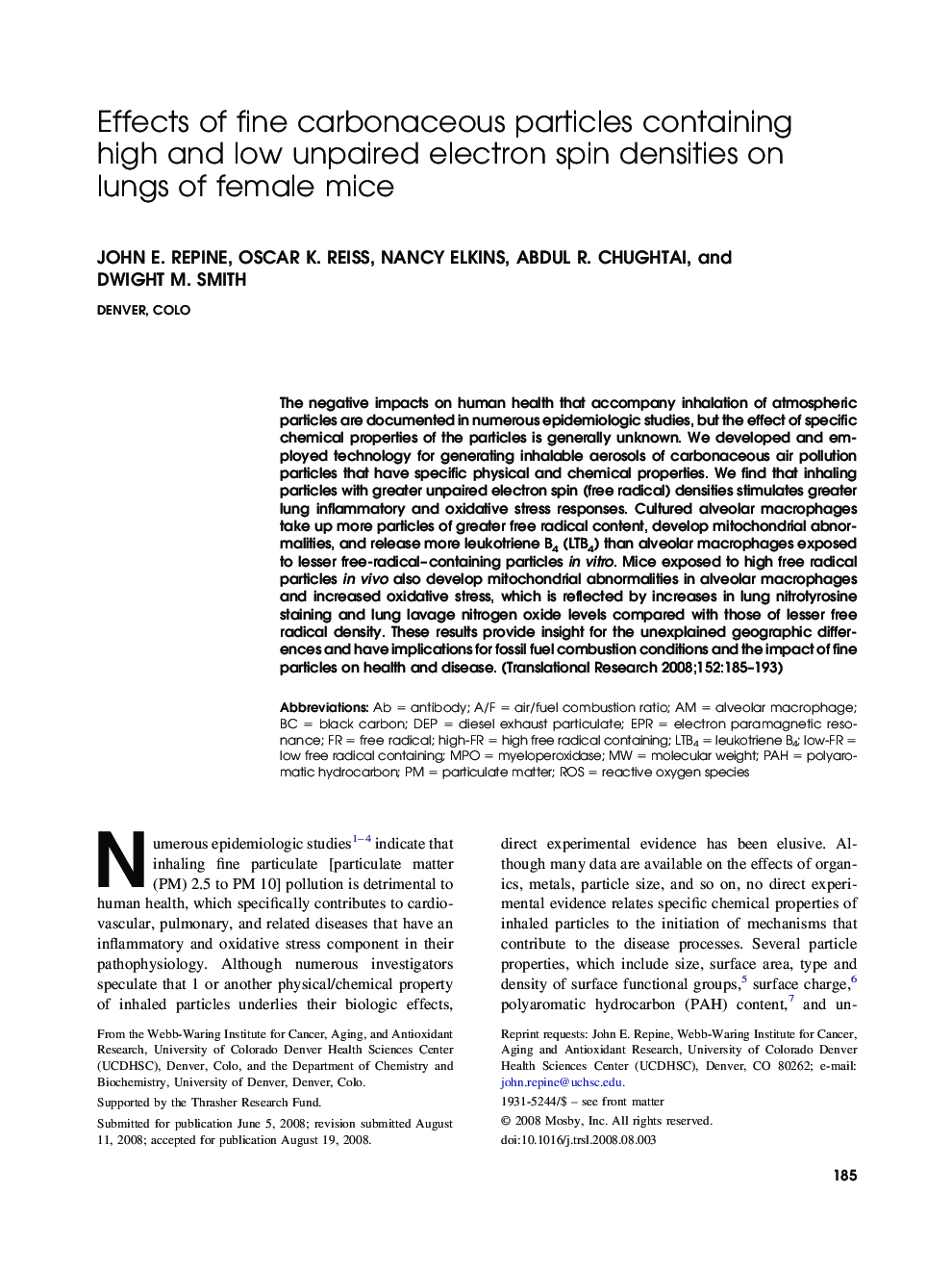| Article ID | Journal | Published Year | Pages | File Type |
|---|---|---|---|---|
| 3841304 | Translational Research | 2008 | 9 Pages |
Abstract
The negative impacts on human health that accompany inhalation of atmospheric particles are documented in numerous epidemiologic studies, but the effect of specific chemical properties of the particles is generally unknown. We developed and employed technology for generating inhalable aerosols of carbonaceous air pollution particles that have specific physical and chemical properties. We find that inhaling particles with greater unpaired electron spin (free radical) densities stimulates greater lung inflammatory and oxidative stress responses. Cultured alveolar macrophages take up more particles of greater free radical content, develop mitochondrial abnormalities, and release more leukotriene B4 (LTB4) than alveolar macrophages exposed to lesser free-radical-containing particles in vitro. Mice exposed to high free radical particles in vivo also develop mitochondrial abnormalities in alveolar macrophages and increased oxidative stress, which is reflected by increases in lung nitrotyrosine staining and lung lavage nitrogen oxide levels compared with those of lesser free radical density. These results provide insight for the unexplained geographic differences and have implications for fossil fuel combustion conditions and the impact of fine particles on health and disease.
Keywords
Related Topics
Health Sciences
Medicine and Dentistry
Medicine and Dentistry (General)
Authors
John E. Repine, Oscar K. Reiss, Nancy Elkins, Abdul R. Chughtai, Dwight M. Smith,
